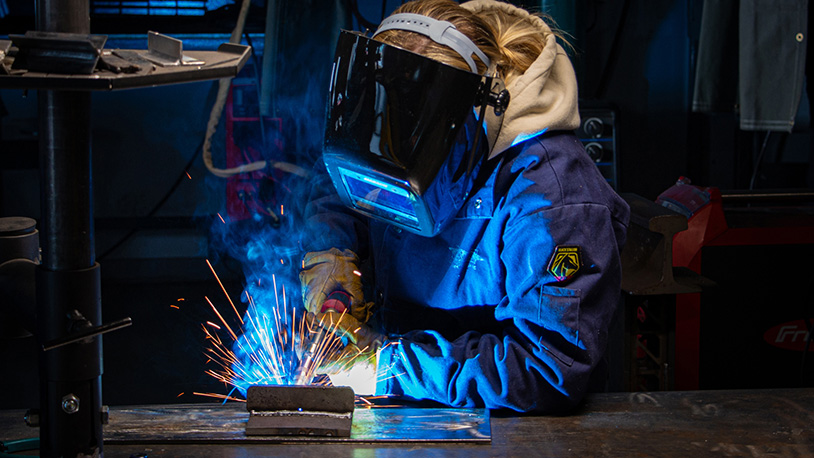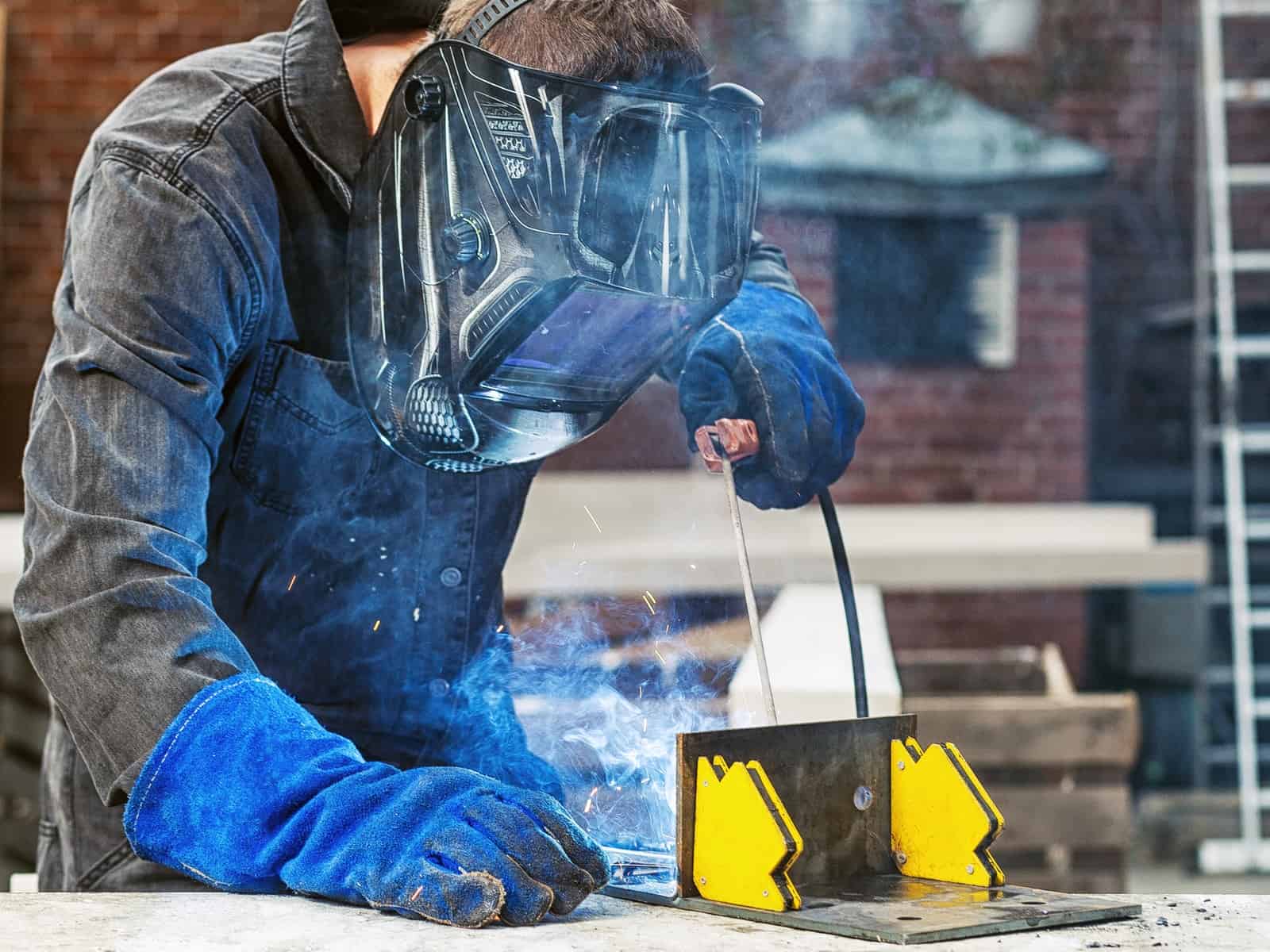Welding issues explained and solved by Montana Mobile Welding and Repair Belgrade Fabrication
Wiki Article
Usual Welding Repair Issues and How to Address Them Properly
Welding fixings frequently experience a series of concerns that can threaten the integrity of the end product. Common problems consist of poor infiltration, porosity, and misalignment, to name a few. Each defect provides one-of-a-kind challenges that call for particular methods for resolution. Recognizing these concerns is crucial for welders intending to improve their abilities and end results. This conversation will check out these common welding repair work issues and effective methods to address them.Insufficient Infiltration
Inadequate penetration occurs when the weld metal fails to fully fuse with the base material, resulting in weak joints and possible architectural failings. This concern usually originates from insufficient warmth input, wrong electrode angle, or improper welding speed. Welders might come across inadequate infiltration due to a miscalculation of the necessary criteria for a particular product thickness or kind. Additionally, contamination on the base material's surface area can prevent effective bonding, aggravating the trouble. To attend to inadequate penetration, welders ought to guarantee ideal setups on their equipment and maintain a clean job surface area. Routine examination of welds is suggested to recognize any deficiencies early, allowing for timely corrections and the avoidance of endangered structural stability in bonded assemblies.Porosity
Porosity is a common defect in welded joints that shows up as tiny gas bubbles trapped within the weld steel. This flaw can jeopardize the honesty of the weld, leading to lowered strength and possible failing under stress and anxiety. Montana Mobile Welding and Repair. Porosity typically arises from contamination, wetness, or improper welding methods, which allow gases to run away right into the molten weld pool. To address porosity, welders ought to guarantee appropriate surface area prep work, maintain a clean functioning atmosphere, and utilize ideal welding specifications. Additionally, selecting the best filler product and protecting gas can minimize gas entrapment. Routine evaluation and screening of welds can aid identify porosity early, guaranteeing timely rehabilitative activities are taken, therefore protecting the high quality and reliability of the bonded frameworkMisalignment
Misalignment in welding can emerge from different variables, consisting of improper configuration and thermal development. Understanding the origin is necessary for efficient resolution. Several improvement techniques are available to straighten parts and assure structural stability.Root causes of Imbalance
Welding imbalance commonly originates from a selection of underlying problems that can jeopardize structural stability. One key cause is inappropriate fit-up of parts before welding, which can result in spaces and uneven surfaces. Variants in thermal growth throughout the welding procedure can also result in distortion, specifically if the products being joined have various coefficients of development. In addition, inadequate clamping and fixturing may stop working to hold elements securely in position, leading to motion during welding. Inadequately maintained tools, including welding makers and devices, may introduce disparities in the weld grain, additional contributing to imbalance. Operator mistake, stemming from inadequate training or experience, can likewise play a substantial duty in developing misaligned welds.
Adjustment Techniques Available
Dealing with imbalance properly requires a mix of rehabilitative strategies tailored to the specific concerns at hand. One usual method is the use of jigs or components to hold elements in the proper setting during welding, guaranteeing constant alignment. Furthermore, pre-heating the materials can help in reducing distortion and enhance fit-up. For considerable imbalance, mechanical adjustment techniques, such as utilizing hydraulic jacks or clamps, can be used to remedy the position before welding. Post-weld warmth treatment might also be essential to eliminate anxieties brought on by imbalance. Mindful assessment and change throughout the configuration stage can prevent misalignment concerns from ending up being significant issues, advertising a smoother welding procedure and enhancing general architectural stability.Distortion
Distortion is a common obstacle in welding that can emerge from various factors, consisting of irregular heating & cooling. Comprehending the root causes of distortion is essential for applying reliable prevention methods. Addressing this concern not only enhances structural honesty yet also enhances the total top quality of the weld.Root causes of Distortion
When based on the intense warm of welding, products commonly undertake modifications that can bring about distortion. This phenomenon mainly occurs from thermal development and contraction during the welding process. As the weld location heats up, the material broadens; upon cooling, it acquires, which can produce interior tensions. In enhancement, unequal heating throughout a work surface can worsen these stresses, resulting in warping or flexing. The sort of product also plays a considerable role; metals with varying thermal conductivity and coefficients of expansion might react differently, leading to unforeseeable distortions. Additionally, bad joint design and insufficient fixturing can contribute to misalignment during welding, raising the probability of distortion. Understanding these reasons is crucial for efficient welding repair service and prevention strategies.Avoidance Techniques
Reliable avoidance strategies for distortion during welding concentrate on controlling heat input and making certain appropriate joint design. Keeping a regular warm input helps to minimize thermal growth and tightening, which can lead to distortion. Using techniques such as preheating the workpiece can additionally reduce the temperature level gradient, promoting consistent home heating. Additionally, picking appropriate joint layouts, such as T-joints or lap joints, can boost security and decrease stress concentrations. Applying correct fixturing to safeguard the work surfaces in area better aids in preserving placement during the welding procedure. Lastly, staggered welding sequences can disperse heat extra uniformly, stopping localized distortion. By using these methods, welders can greatly decrease the possibility of distortion and enhance the overall top quality of their welds.Fracturing
Breaking is a typical problem experienced in welding fixings, frequently resulting from various aspects such as incorrect air conditioning rates, product selection, or insufficient joint prep work. The event of fractures can considerably compromise the integrity of the weld, bring about possible failings throughout operation. To resolve this concern, welders must initially evaluate the origin creates, ensuring that products work and properly selected for the particular application. Additionally, regulating the air conditioning price during the welding procedure is crucial; fast air conditioning can induce stress and bring about cracking. Appropriate joint design and prep work also contribute to minimizing the danger. Implementing these methods can improve weld quality and resilience, inevitably decreasing the probability of cracking in finished weldments.
Incomplete Combination
A significant issue in welding repairs is incomplete fusion, which occurs when the weld steel does not properly bond with the base material or previous weld passes - Montana Mobile Welding and Repair Fabrication. This flaw can cause weak points in the joint, possibly compromising the integrity of the welded framework. Variables adding to insufficient fusion consist of inadequate warmth input, improper welding method, and contamination of the surfaces being signed up with. To resolve this problem successfully, welders ought to assure appropriate pre-weld cleansing and surface prep work, in addition to change their welding criteria to achieve adequate penetration and here are the findings blend. Regular evaluation during the welding process can additionally help identify insufficient fusion early, enabling prompt restorative steps to improve the total high quality of the weldOverheating
While welding repairs can enhance architectural integrity, overheating presents a significant obstacle that can cause product destruction. Excessive heat during welding can alter the mechanical residential or commercial properties of steels, causing lowered stamina, boosted brittleness, and warping. This phenomenon is especially essential in high-stress applications where structural reliability is critical. Determining overheating can entail visual assessments for discoloration or distortion, in addition to keeping an eye on temperature level during the welding process. To minimize the threats connected with getting too hot, welders need to utilize suitable methods, such as controlling warm input, adjusting travel speed, and using suitable filler products. Additionally, implementing pre- and post-weld heat therapies can aid recover material residential properties and enhance the total quality of the repair service, making certain long-lasting efficiency and safety and security.Regularly Asked Inquiries
What Are the Typical Indicators of a Welding Issue?

How Can I Test My Welds for Top quality?
To test welds for top quality, one can use aesthetic assessments, ultrasonic screening, and radiographic techniques. Each technique assures structural honesty, identifies problems, and confirms adherence to defined standards, ultimately boosting the integrity of the welded joints.What Security Safety Measures Should I Take While Welding?
When welding, one need to focus on security by putting on ideal individual safety tools, guaranteeing appropriate air flow, securing flammable products away, keeping a clean office, and recognizing environments to avoid accidents and injuries.Can I Fix a Weld Without Remodeling the Entire Joint?
Fixing a weld without redesigning the whole joint is possible, relying on the damages (Montana Mobile Welding and Repair Welding). Strategies such as grinding, adding visit site filler product, or utilizing a welding process can successfully resolve specific flaws while preserving the bordering frameworkWhat Devices Are Important for Effective Welding Repairs?
Important tools for effective welding repairs include a welding maker, cord brush, mill, safety gear, clamps, and filler products. Each tool plays an essential duty in guaranteeing high quality and security during the repair work process. Porosity commonly develops from contamination, dampness, or incorrect welding methods, which allow gases to leave right into the liquified weld swimming pool. Badly conserved equipment, including welding equipments and devices, may present variances in the weld bead, additional adding to imbalance. When subjected to the intense warmth of welding, products typically undertake changes that can lead to distortion. Splitting is an usual concern run into in welding repair services, commonly resulting from different aspects such as incorrect Learn More air conditioning prices, product option, or poor joint preparation. A substantial issue in welding fixings is incomplete blend, which takes place when the weld metal does not appropriately bond with the base material or previous weld passes.Report this wiki page